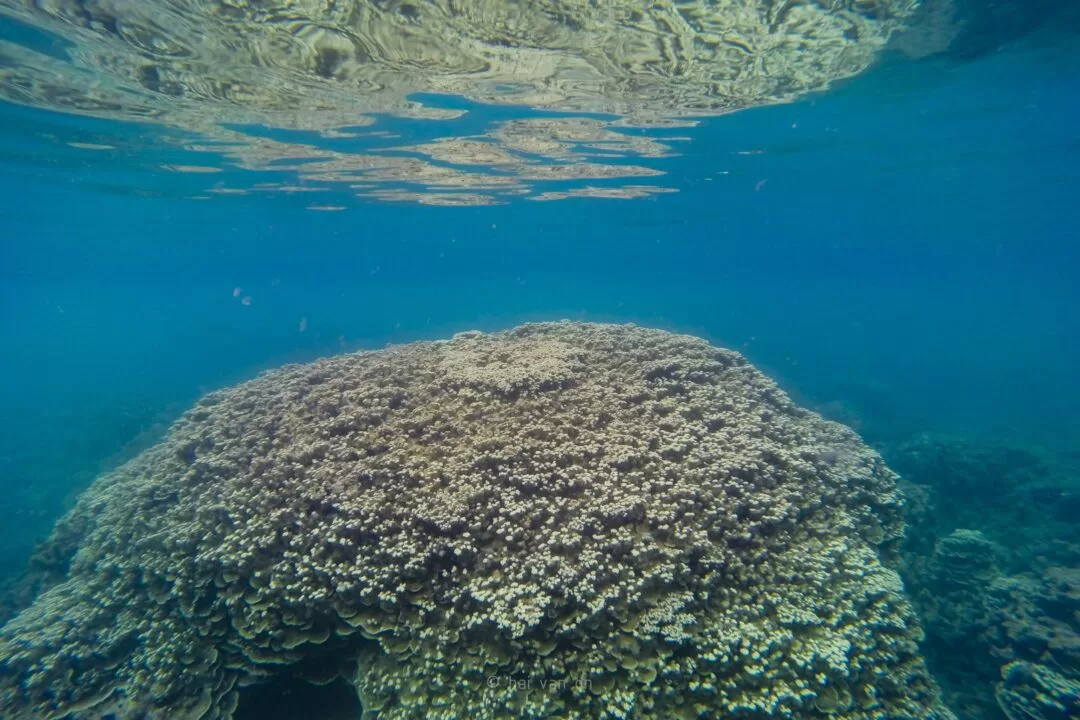Once, there was a mile-long beach in Kawaihae. Off its shore was the most extensive reef of the Big Island. All of us born after 1959 never got to walk along that beach or gaze out over the reef because the harbor replaced it. What is also lost is more than two hundred acres of coral reef. The general public can only see a harbor and is unaware there was once a reef.
We may never know, but we can only imagine the loss and sadness of those who lived there and saw the destruction of the Kawaihae Reef with their own eyes. We also may never know what the reef’s natural state was like.
Fortunately, the public still has access to the void that is now the harbor basin and the surrounding reef. We can enjoy the artificial beach and peninsula. From there, we can get glimpses of how things were underwater.
All the public access to this artificial beach called LSD Beach will soon end due to a new pier Hawaii DOT Harbors wants to build over it. This means that the beach and the remaining reef beyond it will go extinct. This plan existed for decades. The coral reef is protected, so how is it still possible to plan to break the law? We cannot answer this question but will elaborate on why it should not be later.
What would you do if you realized a reef and a beach you and your family love would be destroyed? We hope you will learn what is at stake and do your best to stop it from happening. It may take a decade or more to educate and convince people who care and love that place to help save it.
The Reef cannot speak for the billions of lives living on it. We will do our best to tell its story.
Call to action: Please share and educate your neighbors and friends about the endangered reef in Kawaihae Harbor. Contact your elected officials and inform them about this issue. Remember to contact local and national news organizations to spread the word. Remember, the beach and reefs belong to everyone, and it’s our responsibility to protect them. To ensure the reef’s protection, please get in touch with DOT, Hawaii DOT, NOAA, USACE, and Hawaii DAR and ask them to certify its existence. Put pressure on Hawaii DOT Harbors to change their Kawaihae Harbor Phase 4 improvements project and develop a new design that does not harm the reef. Let Congress know that you don’t support funding this project. Reach out to NGOs and ask for their help. If Hawaii DOT proceeds with Phase 4, contact environmental lawyers like Earth Justice to take legal action and sue them.
Executive Order 13089 (E.O. 13089) on Coral Reef Protection, signed by the President on June 11, 1998, recognizes the significant ecological, social, and economic values provided by the Nation’s coral reefs and the critical need to ensure that Federal agencies are implementing their authorities to protect these valuable ecosystems. E.O. 13089 directs Federal agencies, including the Environmental Protection Agency (EPA) and the Army Corps of Engineers (Corps), whose actions may affect U.S. coral reef ecosystems, to take the following steps: Identify their actions that may affect U.S. coral reef ecosystems; Utilize their programs and authorities to protect and enhance the conditions of such ecosystems; and To the extent permitted by law, ensure that any actions they authorize, fund, or carry out will not degrade the conditions of such ecosystems. This guidance is intended to clarify and reemphasize the protection afforded the Nation’s valuable coral reef ecosystems under the Clean Water Act (CWA) Section 404 regulatory program, the Marine Protection, Research, and Sanctuaries Act (MPRSA) Sections 102 and 103 provisions, Rivers and Harbors Act (RHA) Section 10 requirements, and Federal Projects conducted by the Corps.
